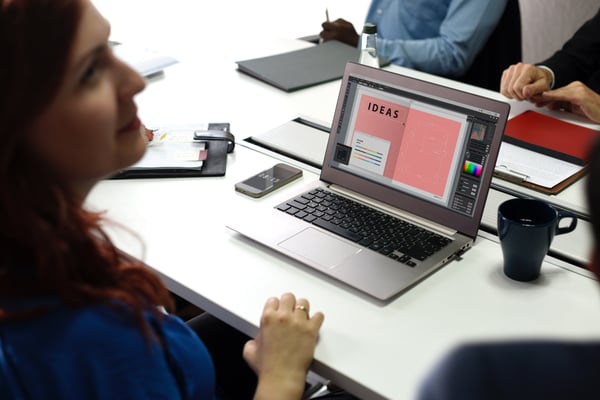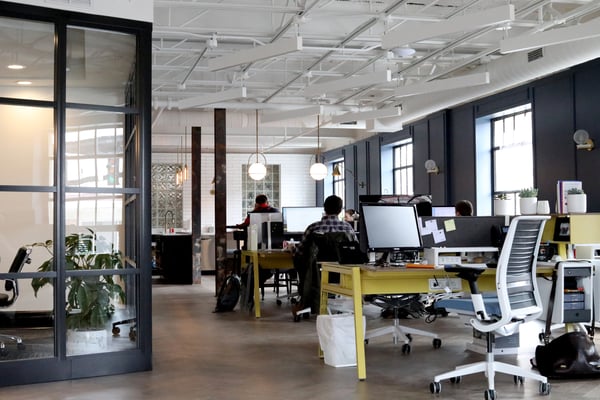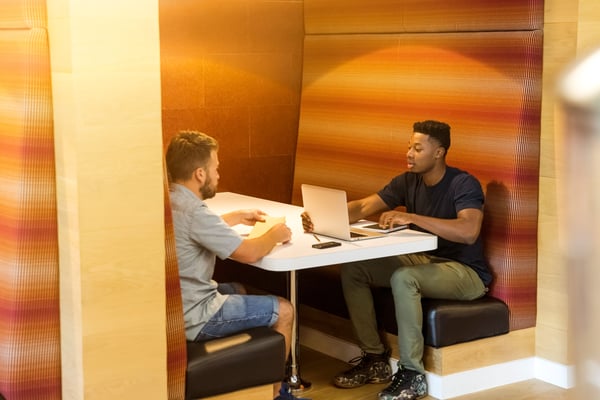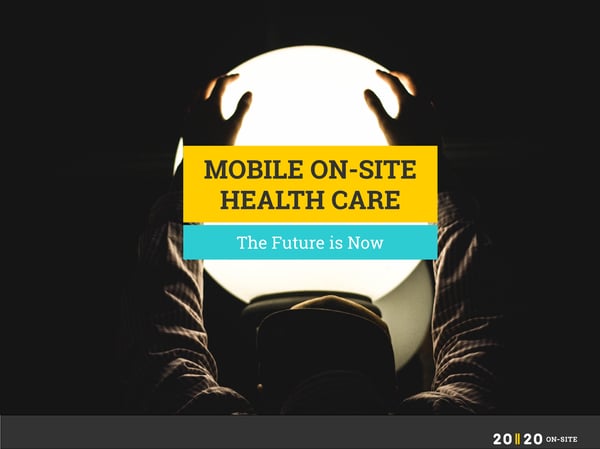Notions about how we should set up workspaces for maximum engagement and productivity go in and out of fashion--cubicles, private office, open spaces--all have their turn, just as skirt lengths, rolled jeans, and beards are sometimes “in” and sometimes “out.”

Photo by rawpixel.com on Unsplash
The challenge for today’s employer is to find ways to turn their office spaces into idea factories (that will, as a side benefit, increase employee engagement.)
Today’s workspaces are (or should be) designed for creativity and collaboration, which happens not while you’re sitting alone at your desk, usually, but in the spontaneous conversations you have in hallways, break rooms, even the lobby.
According to an article in the Harvard Business Review, Workplaces That Move People, “creating collisions--chance encounters and unplanned interactions between knowledge workers--both inside and outside the organization--improves performance.”
The article goes on to say that three key elements of successful communication are exploration (interacting with people in many other social or organizational groups), engagement (interacting with people within your group, in reasonably equal doses), and energy (interacting with more people overall).

Depending on the type of work being done, different office space designs may be necessary. For instance, in a professional service firm where people are expected to be at their work stations for long periods, an enhanced break room will encourage collisions and collaboration--and new ideas for how to solve problems.

Photo by LinkedIn Sales Navigator on Unsplash
Sometimes the objective is to break down the group-think that comes with traditional office silos--for instance, when a marketing department is physically (and philosophically) separate from the sales department. It makes sense that increased communication between the two could result in better marketing materials for the sales team, and that spontaneous conversations could also create a team mentality between two groups that traditionally disparage each other. (For evidence of this, see just about any “Dilbert” cartoon.)

Photo by rawpixel.com on Unsplash
How to get these two groups to collide? Set them side by side, or, better yet, mix them up in the same general area. They’ll gain a greater understanding of the other group’s challenges, and a greater respect for the other group’s needs. Ultimately, they may find themselves helping each other and increasing both groups’ productivity.
In today’s digital workplace, employees may be using many kinds of communication tools--but may rarely engage in actual in-real-life conversations. Many workplaces today are almost completely silent, with workers wearing their headphones and shutting out the world around them.
Some digital workers are physically remote, too, even to the extent that a new phrase, “digital nomads,” has been coined to describe workers who move around more or less at will, getting their work done in coffee shops, libraries, or from the beach.

Photo by rawpixel.com on Unsplash
It’s a special challenge to make collision happen among digital workers, but some companies are experimenting with “coworking” spaces where workers can gather together in a casual way. The first floor of Amazon’s new campus in Seattle is mostly coworking space. Ace Hotel in New York markets its lobby as a workspace. AT&T has created Foundry, a network of research centers in which its engineers work side by side with handpicked start-ups, corporate partners, and third-party developers to bring new products to market faster.

Photo by Brooke Cagle on Unsplash
Coworking/coliving spaces such as Roam Co-Living offer even more--a place to live as well as work. Part of a new trend for digital nomads, Roam and its many competitors worldwide offer furnished bedrooms, coworking spaces, communal kitchens, and daily activities for residents who may come from all over the world but who are employed by bricks and mortar businesses. This is quickly growing trend appeals especially to millennials, but you’ll find the over-50 crowd at them too, and that inter-generational collision is bound to yield creative goodness.
For some examples of innovative solutions from around the world, take a look at the website OfficeLovin’, which spotlights the latest in offices around the world.
And see our own blog, 9 Ways To Help Remote Employees Feel Engaged In Your Company Culture to, well, to do just that.
Also, we have recently put together a new e-book, Mobile On-Site Health Care: The Future Is Now. It’s an HR benefits innovation trend that you might want to check out.



